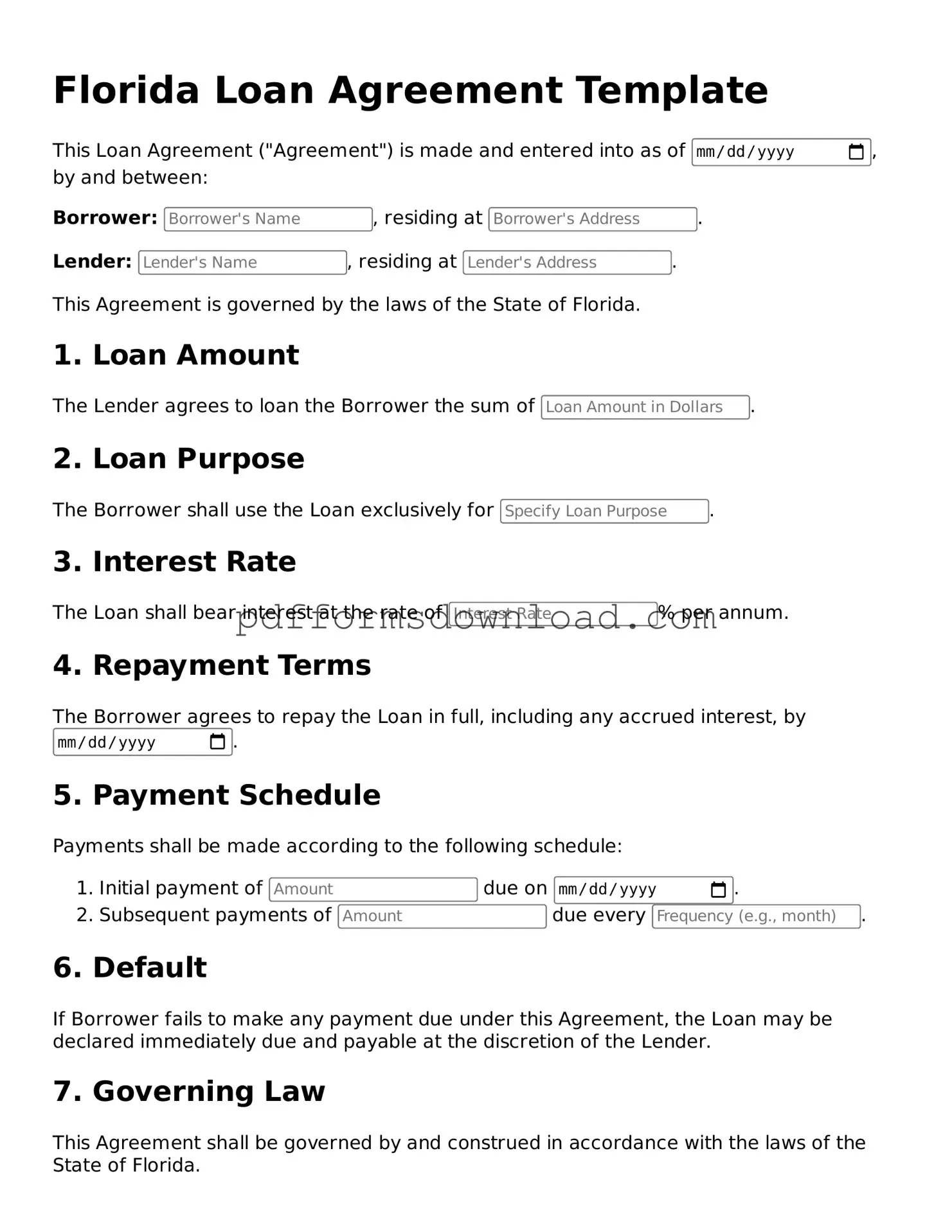What is a Florida Loan Agreement form?
A Florida Loan Agreement form is a legal document that outlines the terms and conditions of a loan between a lender and a borrower in the state of Florida. It specifies the amount of money being borrowed, the interest rate, repayment schedule, and any other relevant terms. This form helps protect both parties by clearly defining their rights and obligations.
Who can use a Florida Loan Agreement form?
Any individual or business in Florida can use a Loan Agreement form. This includes personal loans between friends or family, as well as loans between businesses or from financial institutions. It is important that both parties fully understand the terms before signing.
What information is typically included in the form?
The form generally includes the names and addresses of both the lender and borrower, the loan amount, interest rate, repayment schedule, and any collateral involved. It may also outline the consequences of defaulting on the loan and any fees associated with late payments.
Is it necessary to have the Loan Agreement notarized?
While notarization is not required for a Florida Loan Agreement to be legally binding, it is highly recommended. Having the document notarized adds an extra layer of protection and can help prevent disputes about the authenticity of signatures.
What happens if the borrower defaults on the loan?
If the borrower defaults, the lender has the right to take legal action to recover the owed amount. The Loan Agreement should specify the steps the lender can take, which may include taking possession of collateral or pursuing a court judgment. Understanding these consequences is crucial before entering into the agreement.
Can the terms of the Loan Agreement be modified?
Yes, the terms of a Loan Agreement can be modified, but both parties must agree to any changes. It is advisable to document any modifications in writing and have both parties sign the amended agreement to avoid future disputes.
Where can I obtain a Florida Loan Agreement form?
You can obtain a Florida Loan Agreement form from various sources, including legal stationery stores, online legal document providers, or by consulting an attorney. Ensure that the form you choose complies with Florida state laws to ensure its validity.
